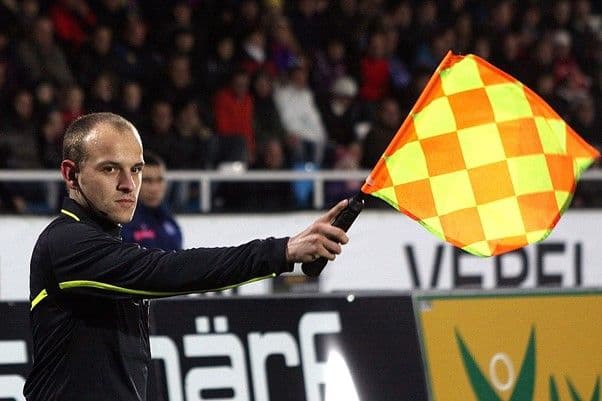Football
Understanding Half-Time and Extra-Time Durations in Football
This article explores the timing structure of football matches, including the 15-minute half-time, extra time, and stoppage time.

Football, known as "the beautiful game," captivates millions with its dynamic play and strategic depth. Understanding the structure and timing of a match, including the 90-minute duration, 15-minute half-time, extra time in cup competitions, and stoppage time, is key to appreciating the game fully.
This article delves into these time intervals, exploring their historical and practical origins. We also compare football's timing to American football, highlighting key differences. From the origins of the 90-minute match to the strategic use of stoppage time, we uncover the intricacies that make football more than just a game of two halves.
How Long is Half-Time in Football?
Half-time in football lasts 15 minutes. This break in the middle of a match is not just a chance for spectators to stretch their legs or grab another pint; it serves several important purposes for the players and teams.
The primary function of half-time is to provide a break in play, allowing players to rest and recuperate. It also offers teams the opportunity to regroup and strategise with their managers for the second half of the game. However, the origins of the half-time interval are quite fascinating and date back to the early days of football.
In the beginning, when teams from different Associations played against each other, they often followed different sets of rules. To address this, the first half of the match would be played under one Association's rules, and the second half under the other Association's rules. This practice necessitated a break between the halves, which eventually evolved into the modern half-time interval.
The duration of the half-time interval has also evolved over time. Initially, it was only 10 minutes long. However, in 1995, this was extended to 15 minutes to allow for more rest and tactical adjustments.
Today, the half-time interval universally lasts 15 minutes across football matches worldwide. This duration is strictly adhered to, ensuring that the break does not exceed the set limit. During extra time, a short break for drinks is permitted between the halves, but the standard half-time remains a 15-minute interval.
How Long is Half-Time in the Premier League?
In England’s top-flight division, the Premier League, the half-time interval lasts exactly 15 minutes, in accordance with official regulations. This 15-minute break is not just a vital period for players to rest and receive tactical instructions from their managers; it also serves a significant role in the commercial and entertainment aspects of the game.
With the extensive broadcast coverage of the Premier League, the half-time interval becomes a prime opportunity for advertisements and sponsorships to be showcased on television screens. This break allows clubs and the league to promote their brands and sponsors effectively.
Additionally, it provides a chance for broadcasters' pundits to analyse the first half of the match, offering insights and entertainment to the viewers. This combination of commercial activity and expert analysis enhances the overall viewing experience for the fans.
How Long is Extra-Time in Football?
In certain competitions, primarily cup competitions such as the domestic FA Cup and European UEFA Champions League, if the score is tied after the initial 90 minutes of play, a football game may go into extra time (ET). Extra time is typically divided into two halves, each lasting 15 minutes, resulting in a total of 30 additional minutes of play.
During extra time, players compete for two 15-minute halves, and any goals scored are added to the final score of the game. If the score remains level after these 30 minutes, the match proceeds to a penalty shootout to determine the winner.
In addition, there is usually a brief 5-minute break between the end of extra time and the start of the penalty shootout, allowing players to prepare for this crucial phase of the game.
How Long is Football Injury Time?
Delays frequently occur during a football match, whether due to substitutions, injuries requiring players to be escorted off the field, or other interruptions. These unintentional delays, along with deliberate time-wasting tactics by teams trying to maintain a narrow lead, contribute to stoppage time, also known as injury time.
"Running the clock" is a common tactic where players intentionally waste time during the final minutes of a game. While referees attempt to manage this by acknowledging and monitoring time-wasting, it's challenging to eliminate it entirely. During these delays, the ball is not in play, and the game is temporarily paused, but the clock continues to run.
To compensate for these interruptions, referees keep track of the time lost and add it to the end of each half. This added time, known as stoppage or injury time, ensures that the total playing time of the match remains fair. Typically, stoppage time can add anywhere from one to four minutes to the game.
The exact amount of stoppage time is determined by the referees and announced at the end of each half. Generally, the second half sees longer stoppage times due to increased aggressive play, more goals, fouls, and celebrations. This added time ensures that the match duration accounts for all delays, maintaining the integrity of the game.

Image credit: UEFA
Why is a Football Match 90 Minutes?
The standard length of a football match being 90 minutes can be traced back to one of the early matches between London and Sheffield. During this match, a dispute arose between the two teams about how long the game should last. Ultimately, they agreed to set the duration at 90 minutes. This rule quickly became one of the fundamental laws of the game and was adopted by leagues worldwide.
However, despite the official 90-minute rule, the average length of a football match often exceeds this duration. It is rare for each half of a match to last exactly 45 minutes. Various factors, such as injuries, substitutions, and celebrations, can lead to additional time being added to each half, extending the total duration of the game to over two hours.
In practice, it is almost inevitable for a match to last longer than 90 minutes. Even without unforeseen delays, the use of the allotted three substitutions per team (each taking approximately 30 seconds) can result in an additional 3 minutes of stoppage time added to either half.
The exact amount of extra time is determined by the referee. During the game, an official will hold up a digital board indicating the minimum amount of stoppage time to be added at the end of each half, ensuring that the spectators are informed about the extended duration. This system ensures that the total playing time accounts for all interruptions, maintaining the integrity and fairness of the match.
How Does UK Football Differ from American Football?
There are numerous differences between football in the United Kingdom and American football (NFL). Besides the fundamental distinction that UK football is primarily played with the feet, while American football is played with the hands, the length of each game and the division of playing time are significantly different.
A typical UK football game lasts a minimum of 90 minutes, whereas an NFL game can extend for several hours. An NFL match is officially 60 minutes long, divided into two 30-minute halves. Each half consists of two 15-minute quarters, making a total of four quarters in the game. However, NFL games routinely exceed the 60-minute mark due to various interruptions, such as media breaks and injuries. Consequently, NFL games often last two to three hours, with the average game duration being around three hours. Unlike UK football, where the clock runs continuously except for certain stoppages, the clock in American football continues to run even when the game is paused, and the ball is not in play.
Both sports include a half-time break between the two halves of the game. In UK football, the half-time break lasts 15 minutes. In American football, the official half-time break is 12 minutes, with some exceptions. One notable exception is the NFL Super Bowl, the league's annual championship game, where the half-time break extends to over 30 minutes to accommodate elaborate performances and extended entertainment.
For more features, guides, and the latest news in the world of football, stay connected to SportsBoom.com.
Recommended Articles

Meet Louis Hobbs, our esteemed authority on all matters sports-related. With a wealth of knowledge and experience, Louis effortlessly emerges as our go-to expert. His particular expertise in the realms of darts and snooker sets him apart and brings a level of insight that goes beyond the ordinary. Louis also holds a deep affection for all things related to US sports, with a special emphasis on basketball and American football, which stand out as his particular favorites. His content may not resonate with you, if you don't consider Lamar Jackson the most skilled player in the NFL.


